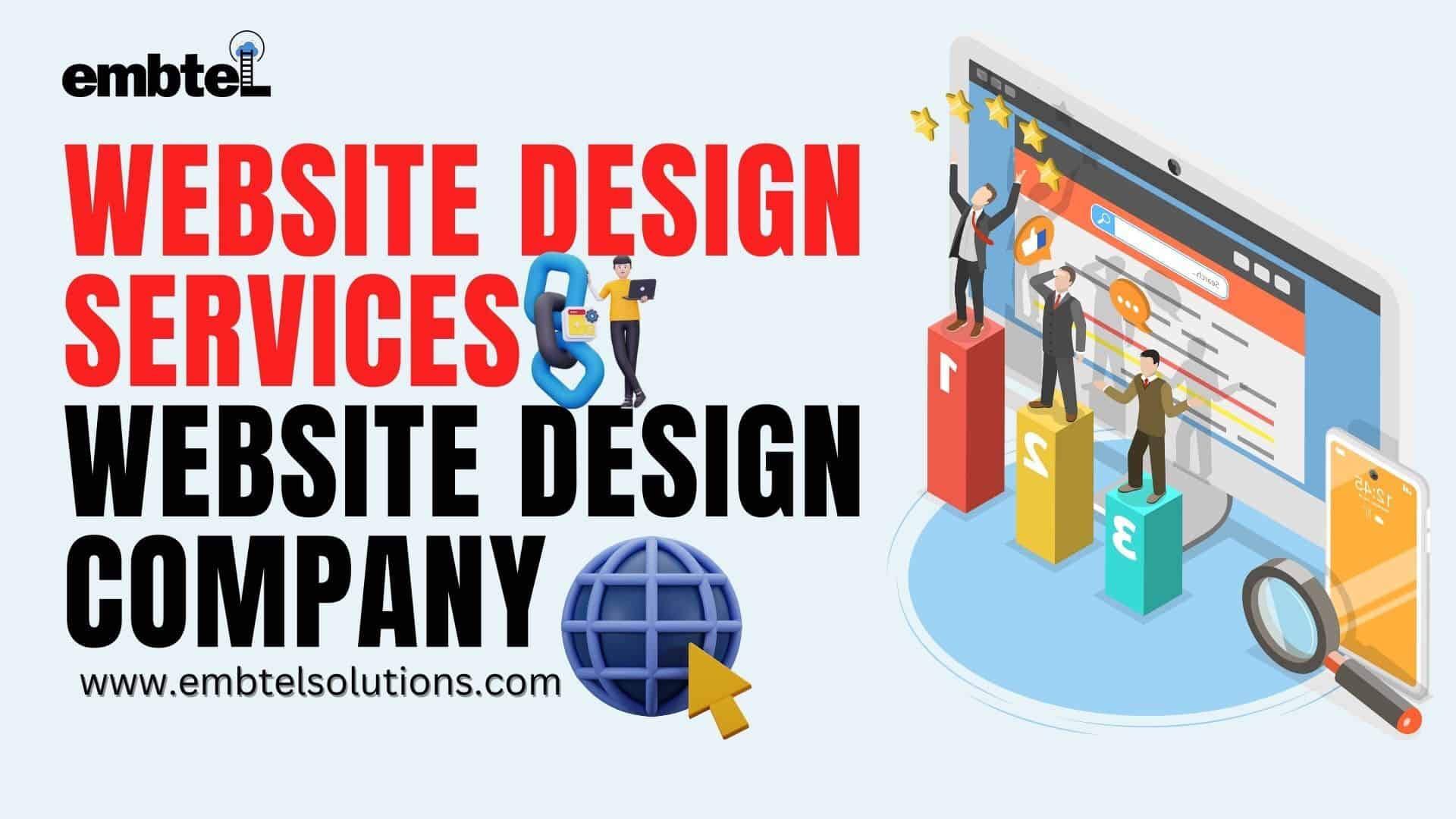1. Website Design Services
Web design is responsible for the overall experience and appearance of a website. It is the process of designing and developing the aspects of your website, such as the structure and layout, as well as the fonts, photos, colors, and graphics.
Graphic design, user experience design, interface design, search engine optimization (SEO), and content production are all aspects of web design that work together to produce the end experience of a website. These aspects influence how a website appears, feels, and functions on different devices such as phones, tablets, and desktop computers.
2. Fundamentals of Website Design Services
Each of the five main components of web design contributes to the entire user experience in its own manner. As a result, you must ensure that a single element does not bring the whole website down. Here are the five elements of Website Design
- Content
- Usability
- Aesthetics
- Visibility
- Interaction
Content
Website Design, There is a saying that ‘Content is King.’ It is one of the primary reasons visitors visit your website and plays a significant impact on Search engine optimization (SEO).
A major effort should be made on creating content that not only read by the users. But also shared, which should include videos, relevant news/information, and high-resolution images, in order to guarantee that your viewers remain on your website for a considerable amount of time.
Usability
Great usability is hardly recognized by the consumer, whereas poor usability is immediately noticeable. Your website should be simple to use, intuitive, accessible, and mobile-friendly. A website should be simple enough to fulfill the purpose of visiting a website without having any trouble locating their requirement.
Your site should be able to foretell the need of visitors and help them to fulfill their needs as effortlessly as possible.
Aesthetics
It is important to have a visually appealing website that works on all devices. You must, however, retain your brand image. Your website should represent who you are as a company and aesthetically connect with your target audience.
Your website’s visual attractiveness not only raises brand awareness but also increases trustworthiness.
Website Design Visibility
Suppose you build a website that is highly user-friendly, pleasing, and purposeful website, the chances are still high that your website will fail if the users are not able to locate it easily.
It’s important that you understand how to found, what platforms to target, and how to utilize your content. There are many factors that affect your location and navigation on search engines, so make sure to consider those factors.
Interaction
Your website should engage your audience, grab their attention, lead them through the stages of your website, and ultimately convince them to contact you.
Your website isn’t just for show; it’s also meant to help you produce leads, boost sales, and grow your company, so make sure it connects with your visitors effectively.
3. Significance of web design
A company’s website is one of its most significant assets. A strong first impression is essential for every user. You are suppressing your brand if you do not have a strong digital presence. On the other hand, a good web presence can lead to the growth of a business by giving a hike in sales and maintaining a good reputation of a business.
Visitors who look on the internet for your company and find nothing may believe you’ve gone out of business, while customers who search for your company and discover something unpleasant may be suspicious of the quality of the product or service you provide. Make every connection that starts on your website a wonderful one by having your website developed in compliance with the user’s expectations.
4. What is the purpose of Website Design?
Web design is utilized for a variety of important tasks and goals, including:
Search engine optimization
SEO is a technique for enhancing the chances that a website will be discovered by search engines. Web design encodes information in a manner that search engines will understand. It can boost business because the site ranks on the top search result pages and leads to more traffic to the website.
Customer satisfaction
A professional site design ensures customer satisfaction by briskly providing the information they are looking for. It helps the business in forming a connection with visitors by ensuring that the website navigation is simple, predictable, and consistent.
Mobile responsiveness
The flexibility of a website to show on a mobile device and modify its layout and dimensions to be viewable is referred to as mobile responsiveness. Web design also ensures that webpages are simple to browse and navigate on mobile devices. Customers can access a website that is well-designed and mobile-responsive on any device that is convenient for them.
Consistent branding
Branding is the advertising of a product using a unique design. Web design helps businesses in developing or maintain a unique brand identity. When a website consistently reflects a firm’s brand, people can more easily recognize the visual features of a brand as a certain company and its products/services.
User experience optimization
Web designers use reports to discover how people engage with websites all around the globe. They assess which pages get the most or least traffic and modify the site design to improve the user experience.
Website Design Conversion
Conversion occurs when a website visitor completes a desired activity. Attractive site design entices visitors to remain long enough to be converted into customers. They will respond by clicking on a call-to-action button, exchanging vital information, and subscribing to or purchasing a product.
Increase sales
A compelling website’s goals include increasing the number of things sold or getting more engaged consumers. Because when a well-designed website reaches targeted clients and search engines, it assists businesses in increasing conversions and sales online.
5. Things to avoid in Website Designing
We’ve discussed what determines a good design. Let’s take a look at what it isn’t.
In general, visitors should not have to do anything to use your website. The whole experience of browsing your website should be simple and intuitive.
Here are several more things to avoid:
• Images and backdrops that distract. As a general rule, avoid tiled backdrops. Though there are a few circumstances when a tiled backdrop may be appropriate, they are usually distracting.
• Non-responsive layout. Nowadays, your website should simply be mobile responsive.
• Unspecific links and buttons. Visitors should not have to look for links and buttons; instead, they should be able to see which pictures and text will lead them to other web pages or confirm their options. Similarly, fillable fields should be easily identifiable by users.
• Generic or irrelevant stock pictures, as well as filler text lacking useful information.
6. CONCLUSION
Web design has a significant impact on the entire experience of website visitors. It consists of the following elements: content, usability, aesthetics, visibility, and interaction. As a result, it is important to create a website with a strong user interface, usability, and ease of navigation.
There are several aspects that influence website design, both favorably and adversely, therefore it is preferable to get expert assistance rather than constructing it with limited understanding. It also has an impact on your company’s general reputation since it represents your company online.
The Basic Concept of Website Migration
Contact Us
[email protected]
(510) 585 6585





